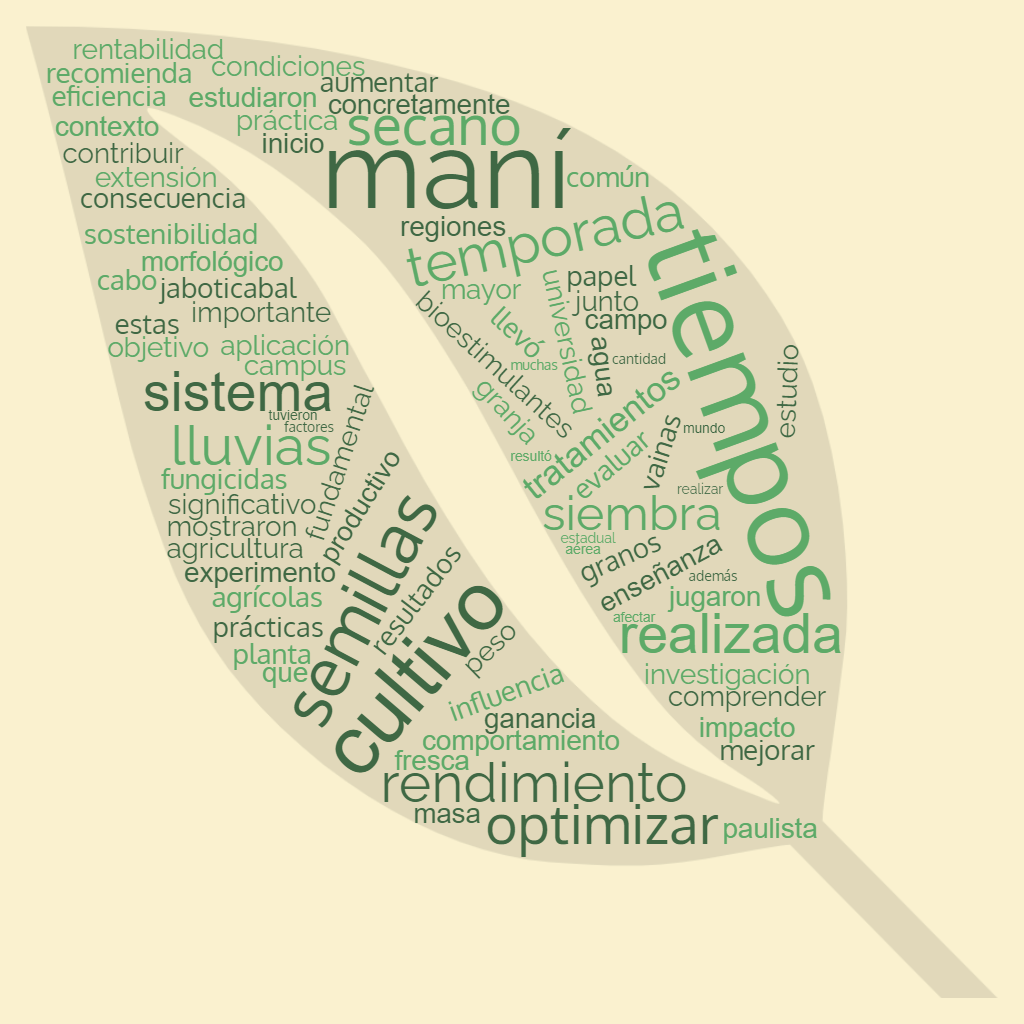Los tiempos de siembra y los tratamientos de semillas influyen en la productividad del maní en un sistema de secano
DOI:
https://doi.org/10.52755/sas.v4i1.198Keywords:
Arachis hypogaea, Dryland agriculture, Agricultural technology , ProductionAbstract
The cultivation of peanuts in a rainfed system is a common practice in many agricultural regions of the world. In order to optimize the productivity of this crop, it is critical to understand how sowing times and seed treatments can affect its performance. In this context, the objective of this study was to evaluate the morphological and productive behavior of peanuts under the influence of sowing times and seed treatments. The experiment was conducted under field conditions at the Teaching, Research and Extension Farm of the Universidade Estadual Paulista - Jaboticabal Campus. Two factors were studied, sowing times and seed treatments. The results showed that the sowing times had a significant impact on the amount of pods per plant. The sowing carried out in the rainy season resulted in greater gain in aerial fresh mass, weight of 100 grains and efficiency of water use. In addition, sowing performed on 10/25/2021 and seed treatments with fungicides and biostimulants played an important role in peanut productivity. Therefore, it is recommended to carry out sowing at the beginning of the rainy season, specifically on 10/25/2021, along with the application of seed treatments to optimize the performance of this crop. These practices can contribute to increase the productivity of peanuts in a rainfed system and, consequently, improve the sustainability and profitability of agriculture.
Downloads

Downloads
Published
How to Cite
Issue
Section
License
Copyright (c) 2023 Rodrigo Alves Sousa, Raphael Augusto Novais Gonzales, jonathan viana, Guilherme Nascimento Franco, Julia Ramos Guerreiro, Luiz Fabiano Palaretti

This work is licensed under a Creative Commons Attribution-NonCommercial-ShareAlike 4.0 International License.
Autores concordam com os seguintes termos:
a) Os autores mantêm os direitos autorais e concedem à revista o direito de primeira publicação, com o trabalho simultaneamente licenciado sob a LicençaAttribution-NonCommercial-ShareAlike 4.0 International, que permite o compartilhamento do trabalho com reconhecimento da autoria e publicação inicial na Revista SAS. A licença permite o uso, a distribuição e a reprodução irrestrita, em qualquer meio, desde que devidamente citada a fonte. Essa licença permite também que outros remixem, adaptem e criem a partir do seu trabalho para fins não comerciais, desde que atribuam a você o devido crédito e que licenciem as novas criações sob termos idênticos.
b) Não cabe aos autores compensação financeira a qualquer título, por artigos ou resenhas publicados na South American Sciences.
c) Os conceitos expressos nos artigos publicados na South American Sciences são de inteira responsabilidade de seus autores.








